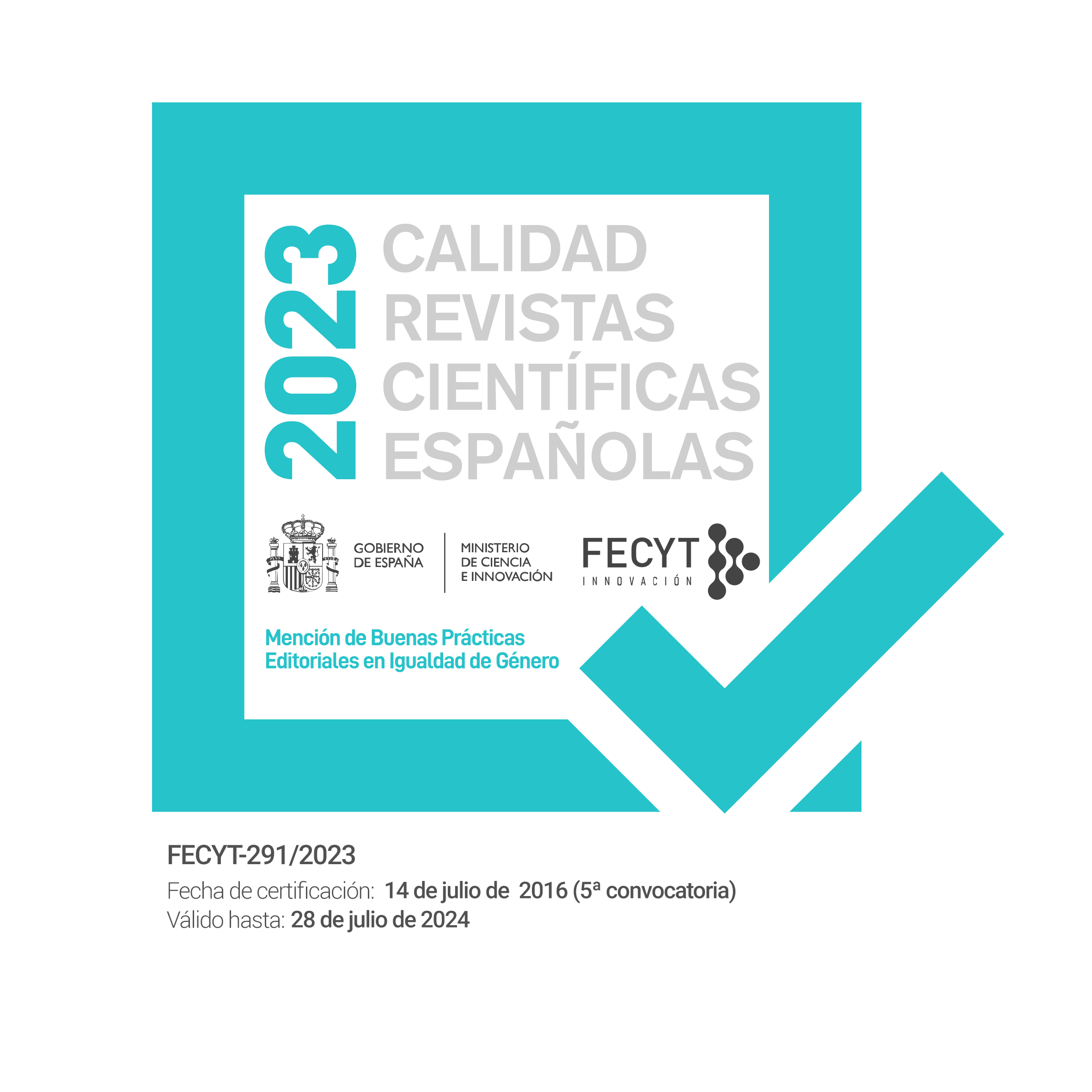Student engagement in the Flipped Classroom model implemented in online learning
DOI:
https://doi.org/10.17398/1695-288X.23.1.43Abstract
Student engagement is a determinant factor of students' academic success, with added relevance for online learning. The aim of this study was to analyse students' cognitive, affective, and behavioural engagement in a pedagogical proposal based on the Flipped Classroom model, with Portuguese secondary school students. The study, conducted during the COVID-19 pandemic, combined asynchronous and synchronous lessons divided into learning episodes (Summary, Quiz and Rooms). Mixed methods were used to analyse students' discourses, behaviours, perceptions of the experience and academic performance. The results showed that the proposal enhanced a high level of behavioural engagement in the students as expressed by the indicators of task completion, peer interaction and participation. Students showed higher levels of cognitive engagement in the Rooms episodes as they were conducive to peer interaction, explicitness of knowledge and reflection facilitated by interaction with the teacher. Satisfaction was the most prominent indicator of student affective engagement. This study offers a better understanding of the factors that influence student engagement in the Flipped Classroom model and suggests practical implications for enhancing it in online learning.
References
Bardin, L. (2011). Análise de Conteúdo. Edições 70.
Bhagat, K. K., Chang, C.-N., & Chang, C.-Y. (2016). The impact of the flipped classroom on mathematics concept learning in high school. Educational Technology & Society, 19(3), 134-142.
Bishop, J., & Verleger, M. (2013). The flipped classroom: A survey of the research. [Conference session]. 2013 ASEE Annual Conference & Exposition, Atlanta, Georgia. https://doi.org/10.18260/1-2--22585
Bond, M. (2020). Facilitating student engagement through the flipped learning approach in K-12: A systematic review. Computers & Education, 151, 103819 https://doi.org/10.1016/j.compedu.2020.103819
Bond, M., & Bedenlier, S. (2019). Facilitating student engagement through educational technology: Towards a conceptual framework. Journal of Interactive Media in Education, 2019(1), 1–14. http://doi.org/10.5334/jime.528
Creswell, J.W., & Clark, V.L. P. (2013). Pesquisa de métodos mistos. Penso.
Eccles, J. (2016). Engagement: Where to next? Learning and Instruction, 43, 71–75. https://doi.org/10.1016/j.learninstruc.2016.02.003.
Fauzi, S. H. M., & Hussain, R. M. R. (2016). Designing instruction for active and reflective learners in the flipped classroom. Malaysian Journal of Learning and Instruction, 13(2), 147–173. https://doi.org/10.32890/mjli2016.13.2.6
Fredricks, J. A., Blumenfeld, P. C., & Paris, A. H. (2004). School engagement: Potential of the concept, state of the evidence. Review of Educational Research, 74(1), 59–109. https://doi.org/10.3102/00346543074001059.
Kahu, E. R. (2013). Framing student engagement in higher education. Studies in Higher Education, 38(5), 758–773. https://doi.org/10.1080/03075079.2011.598505
King, R. B. (2015). Sense of relatedness boosts engagement, achievement, and well-being: A latent growth model study. Contemporary Educational Psychology, 42, 26–38. https://doi.org/chqz
Kong, S. C. (2015). An experience of a three-year study on the development of critical thinking skills in flipped secondary classrooms with pedagogical and technological support. Computers & Education, 89, 16–31. https://doi.org/10.1016/j.compedu.2015.08.017.
Lai, H. M., Hsieh, P. J., Uden, L., &Yang, C.H. (2021). A multilevel investigation of factors influencing university students’ behavioral engagement in flipped classrooms. Computers & Education, 175, 104318 https://doi.org/10.1016/j.compedu.2021.104318.
Lo, C. K., & Hew, K. F. (2017). A critical review of flipped classroom challenges in K-12 education: Possible solutions and recommendations for future research. Research and Practice in Technology Enhanced Learning, 12(4), 1–22.
https://doi.org/10.1186/s41039-016-0044-2.
Lo, C. K., & Hew, K. F. (2021). Developing a flipped learning approach to support student engagement: A design-based research of secondary school mathematics teaching. Journal of Computer Assisted Learning, 37(1), 142–157. https://doi.org/10.1111/jcal.12474
Moore, M. G. (1989). Editorial: Three types of interaction. The American Journal of Distance Education, 3(2), 1–7. https://doi.org/10.1080/08923648909526659
O’Flaherty, J., Phillips, C., Karanicolas, S., Snelling, C., & Winning, T. (2015). Corrigendum to “the use of flipped classrooms in higher education: A scoping review. The Internet and Higher Education, 25, 85–95. https://doi.org/10.1016/j.iheduc.2015.05.001.
Olakanmi, E. E. (2017). The effects of a flipped classroom model of instruction on students’ performance and attitudes towards chemistry. Journal of Science Education and Technology, 26(1), 127–137. https://doi.org/10.1007/s10956-016-9657-x.
Pelikan, E. R., Lüftenegger, M., Holzer, J., Korlat, S., Spiel, C., & Schober, B. (2021). Learning during COVID-19: The role of self-regulated learning, motivation, and procrastination for perceived competence. Zeitschrift für Erziehungswissenschaft, 24(2), 393–418. https://doi.org/10.1007/s11618-021-01002-x
Pietarinen, J., Soini, T., & Pyhältö, K. (2014). Students’ emotional and cognitive engagement as the determinants of well-being and achievement in school. International Journal of Educational Research, 67, 40–51. https://doi.org/chq3
Riordan, T., Millard, D. E., & Schulz, J. B. (2016). How should we measure online learning activity? Research in Learning Technology, 24. https://doi.org/10.3402/rlt.v24.30088.
Ribeirinha, T., & Silva, B. (2021). The flipped classroom model potential in online learning: an assessment focused on pedagogical interactions. Publicaciones, 51(3), 295-345. https://doi.org/10.30827/publicaciones.v51i3.18076
Ribeirinha, T., Alves, R., & Silva Duarte, B. (2022). Análise comparativa do modelo Sala de Aula Invertida no contexto presencial e on-line. Revista Conhecimento Online, 2, 21–48. https://doi.org/10.25112/rco.v2.3004
Ruiz, R. D., (2021). Peirats Chacón, J., y Marín Suelves, D. (2020). Estrategias didácticas digitales: Encuentros entre la investigación y la práctica. Calambur. Revista Latinoamericana De Tecnología Educativa-RELATEC, 20(1), 103-104. https://relatec.unex.es/article/view/3975
Rumberger, R. W., & Rotermun, S. (2012). The relationship between engagement and high school dropout. In S. L. Christenson, A. L.
Reschly, & C. Wylie (Eds.), Handbook of research on student engagement (pp. 491–513). Springer.
Schindler, L. A., Burkholder, G. J., Morad, O. A., & Marsh, C. (2017). Computer-based technology and student engagement: A critical review of the literature. International Journal of Educational Technology in Higher Education, 14(1), 1-28. https://doi.org/10.1186/s41239-017-0063-0
Van Alten D.C.D., Phielix, C., Janssen, J., & Kester L. (2019). Effects of flipping the classroom on learning outcomes and satisfaction: A meta-analysis. Educational Research Review, 28, 100281, 1-18. https://doi.org/10.1016/j.edurev.2019.05.003
Xu, B., Chen, N. S., & Chen, G. (2020). Effects of teacher role on student engagement in WeChat-Based online discussion learning. Computers & Education, 157, 103956. https://doi.org/10.1016/j.compedu.2020.103956
Zhu, E. (2006). Interaction and cognitive engagement: An analysis of four asynchronous online discussions. Instructional Science, 34(6), 451-480. https://doi.org/10.1007/s11251-006-0004-0
Downloads
Published
Issue
Section
License
Copyright (c) 2024 Teresa Ribeirinha, Bento Silva

This work is licensed under a Creative Commons Attribution-NonCommercial-NoDerivatives 4.0 International License.
Authors who publish in this journal accept the following conditions:
1. The Author retains copyright in the article. Upon acceptance of the article, the author shall grant to the Publisher the right of first publication of the article. with the dcoument registered with the Creative Commons Attribution-NonCommercial-NoDerivative 4.0 International (CC BY-NC-ND) license, which allows to third parties to use what is published whenever they mention the authorship of the work and the first publication in this journal.
2. Authors can make other independent and additional contractual agreements for the non-exclusive distribution of the article published in this journal (eg, include it in an institutional repository or publish it in a book) provided they clearly indicate that the work was published for the first time in this journal.
3. Authors are allowed and recommended to publish their work on the Internet (for example on institutional or personal pages) before and during the review and publication process, as it can lead to productive exchanges and a greater and faster diffusion of published work (see The Effect of Open Access).









